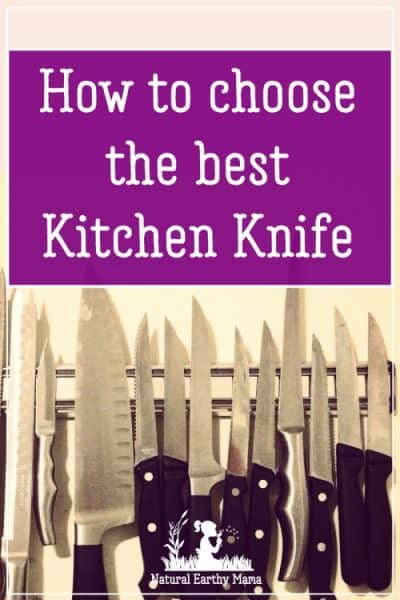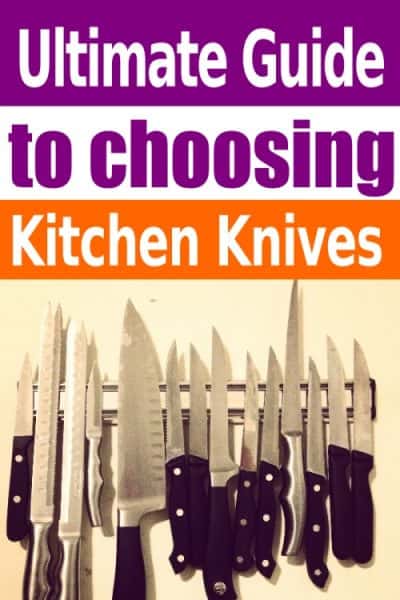 It can be confusing for a beginner (or intermediate) home cook to know which knives are used for which purpose. Knowing the types of kitchen knives that are available to you and how they are used, can really improve your home cook skills!
It can be confusing for a beginner (or intermediate) home cook to know which knives are used for which purpose. Knowing the types of kitchen knives that are available to you and how they are used, can really improve your home cook skills!
Why do you need to know the types of kitchen knives?
If you are anything like me, you have probably got a range of different knives in your kitchen already. I know I do!
Please read: This information is provided for educational purposes only and is not intended to treat, diagnose or prevent any disease. We encourage you to make your own health care decisions in partnership with a qualified health care professional.
This post contains affiliate links, this means at no extra cost to you, we make a commission from sales. Please read
our Disclosure Statement
Before I knew the types of kitchen knives and their uses I used to grab the cleanest knife that was closest to me and make it ‘fit’ the situation. Using a knife can be so much better than this!
By knowing the different knives and their uses, you can be preparing your food like a pro! More time efficient, and most importantly – safely!
As with all sharp objects, please make sure you keep them away from children.
It is also important to let the other people in the house who are using the knife about how sharp it is.
Grab our free printable meal planning sheet here:
Types of Kitchen Knives
Boning Knife
As you can probably guess, the boning knife is for cutting the meat away from the bone.
It has a very narrow tip, which allows you to get right in close next to the bone.
Watch out, you will want to keep this knife incredibly sharp!
Some boning knifes have a metal shaft on the end of them that allows a skilled chef to get the marrow out of the bone also.
When would you use this type of knife? You would use this knife when you are working with meat that still has the bone in.
Do I need this knife? If you work with meat often, then this would be a good knife to add to your collection.
Chef Knife
This is likely to be your number one knife in the kitchen.
It is designed to allow you to chop through foods by rocking back and forwards through foods.
It has a large blade on it which allows you to cut easily through foods. This is fantastic for cutting through large items.
Again, you will want to keep this knife as sharp as you feel comfortable with.
Having a good chef knife can really help with food prep and save time. Who doesn’t want to save time!
Kitchen Shears
A really good pair of shears in the kitchen is super helpful. Not only does it save your knives from cutting through plastic bags when opening food items, it also has a range of other functions.
Kitchen shears now come with nut crackers, bottle openers, and more! You can get herb shears that allows you to chop herbs very easily.
When looking for a pair, you will want to look for rust proof material and heavy duty ones.
When would you use this type of knife? Probably when cutting chicken or fish, leafy herbs, opening bagged items, and all other items you cut in the kitchen!
Paring Knife
This knife is small shaped knife that is used for preparing fiddly foods. They are great for peeling rather than using a peeler.
You can use this knife to complete from detailed food preparation.
You can get very cheap costing paring knifes, if you are opting for a cheaper version just be aware that some of their blades are not as sharp.
This can cause the blade to bend. This is particularly true for the tip of the blade. This can be incredibly frustrating.
Paring knifes can come in smooth, serrated, and curved blades. Each of these can be used to prepare a range of foods.
A paring knife will become your best friend in food preparation, especially if you are a little clumsy with the larger knives.
Santoku Knife
This is a Japanese style of the traditional ‘Chef Knife’. It has small indentations along the sharp edge of the blade, this is what makes it different to the chef knife.
The purpose of these small indentations is for the food to fall away from the knife.
Sometimes food can get stuck to the chef knife while you are cutting.
This is a lot less likely to happen with the Santoku knife due to its design.
Learn to chop vegetables in straight lines very quickly with the Santoku knife.
![]()
![]()
![]()
![]()
![]()
![]()
![]()
![]()
Other Knives
There is of course many, many other knives that could be listed here. For example, bread knife, butcher knife, meat cleaver, filleting knife… and much more!
Hopefully this has given you a quick overview on some of the more common knives and how you can use them in the kitchen.
Remember, it is important to have a knife that you enjoy working with and with a sharpness that you feel comfortable with.

